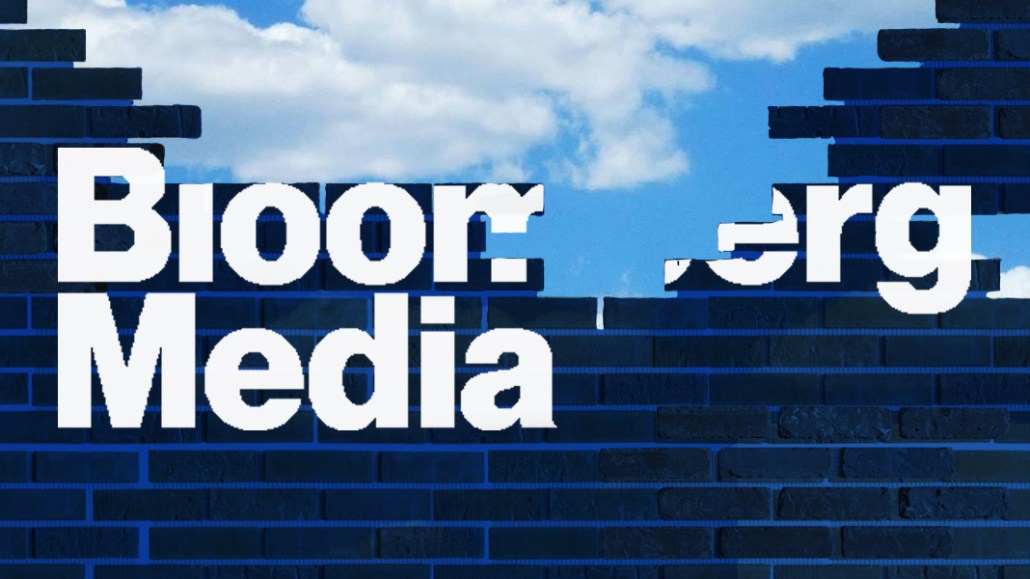Bloomberg Media is going deeper into OTT by expanding its social-first video brand QuickTake

Bloomberg Media QuickTake — formerly known as TicToc, with the name later changed for obvious reasons — is the company’s three-year-old short form video platform that was originally built to appeal to a mobile Twitter audience.
That was wave one, according to Jean Ellen Cowgill, general manager of QuickTake. Now the platform is expanding into streaming with the inclusion of the video brand on Bloomberg Media’s OTT app, which is relaunching on November 9.
This move will attempt to further break the company’s video coverage away from the financial news content that its television network offers in order to reach a broader, younger audience from every business sector, said Cowgill.
In the final episode of Digiday’s The New Normal, hosted by Digiday Media president and editor-in-chief Brian Morrissey, Cowgill and Bloomberg Media chief growth officer Scott Havens, discuss how they built a new business within Bloomberg Media and have since expanded the video platform from its native Twitter into the streaming market.
Why QuickTake isn’t Bloomberg Media TV
QuickTake has over 100 video producers, editors and other staffers dedicated to building it, which Havens said was important to have right off the bat to distinguish the products internally.
Because while the QuickTake team sources ideas and content from Bloomberg Media’s 2,700 journalists and analysts, having one singular production team to create 24 hours worth of content for both platforms seven days a week would leave one or both lacking, he said.
But the biggest difference between QuickTake and BTV is their audiences: BTV being very inside the financial industry and QuickTake covering the whole of business news. Bloomberg Media’s other sub-brands and verticals, like Businessweek, will be pulled from as well to bring those “franchises” alive, Cowgill said.
Both of the platforms’ streaming services are offered through the Bloomberg Media OTT app and Havens added that it also makes QuickTake’s introduction to OTT easier because Bloomberg Media TV already paved the way in establishing deals with streaming providers.
“We’ve got paper in place and a lot of long standing relationships so it’s more about adding QuickTake to the mix versus starting from scratch,” he said.
Beyond the OTT app and the social media presence, Cowgill said QuickTake also has partnerships with free, ad-supported television providers and connected TVs, which don’t require a viewer to download the Bloomberg Media OTT app, thus allowing for more discoverability as they scroll through the channels.
Still sticking to social
Because QuickTake was first launched as a 24/7 news source for Twitter, Cowgill said her team learned about what works on social and for a mobile audience, and what doesn’t.
But now QuickTake will be available on OTT and short form content for social won’t cut it as streaming audiences come to the platform for longer docu-series and other binge-able content.
But this doesn’t mean that QuickTake is sunsetting its social distribution strategy. The increase in content production that will take place for the OTT app could lead to the temptation to simply cut down that content and republish it on Twitter and other mobile platforms, Cowgill said, but the learnings that her team gleaned from being social-only for the first two years indicated that that strategy will not work for a social media audience. The content has to be created with social media in mind from the start.
Therefore, there will be a mix of content between the “longer form experience for the bigger screen on their TV at home and also … the shorter insights that are right for them when they’re dipping in and out of their phones,” said Cowgill.
Entering the streaming wars
Despite a surplus of media companies and networks launching their own streaming platforms, Havens is optimistic that there is still a lot of white space in the news and analysis content category.
“There is so much battle going on in entertainment, but we’re not entering that threat. That’s getting saturated with some major players,” he said.
Cowgill said she thinks that this is still the beginning of the next phase of television and based on consumer habits and the increase of cord cutters, even in just the past few months, it indicates that there is more and more consumer interest in streaming.
The ad model makes sense
At its onset, QuickTake is ad-supported but Cowgill thinks the platform has a competitive edge for standing out.
“A lot of what we think about business television today is really markets television, or ‘stocks as sport,'” Cowgill said. But that is not the mission of QuickTake. It’s looking to tell stories through the lens of business more so than give updates on Wall Street.
QuickTake has reached more than 50 million people across all of its social channels and Cowgill said that her team will be marketing the OTT channel to those platforms to try and cross-pollinate the social audience with the OTT audience. But despite CPMs for OTT being one of the most lucrative at the moment, building an OTT audience is not easy.
So, she said, her team is looking to sell more cross-platform deals that will increase the scale of the audience of these deals.
More in Media

Digiday+ Research: Publishers’ growing focus on video doesn’t translate to social platforms
Major publishers have made recent investments in vertical video, but that shift is not carrying over to social media platforms.

Technology x humanity: A conversation with Dayforce’s Amy Capellanti-Wolf
Capellanti-Wolf shared insight on everything from navigating AI adoption and combating burnout to rethinking talent strategies.

How The Arena Group is rewriting its commercial playbook for the zero-click era
The company is testing AI-powered content recommendation models to keep readers moving through its network of sites and, in doing so, bump up revenue per session – its core performance metric.





